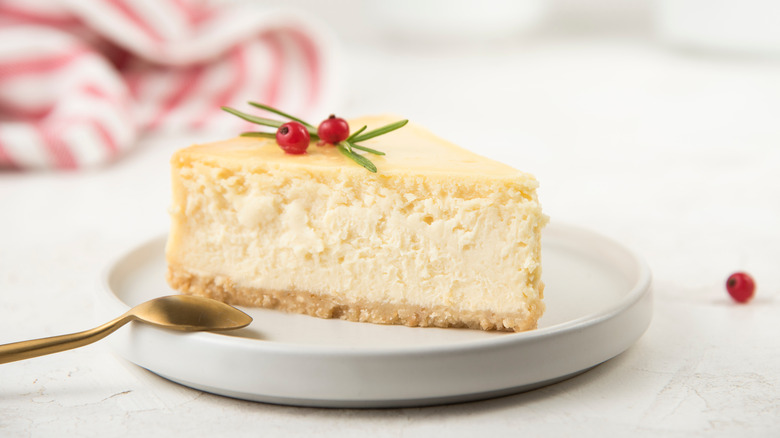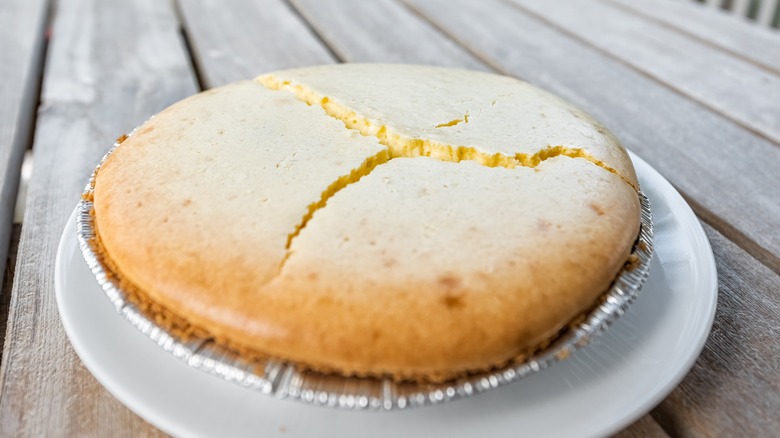The Important Step You Can't Skip When Chilling Homemade Cheesecake
Cheesecake is a fail-safe, crowd-pleasing alternative to chocolatey desserts or cakes that are more crumbly than smooth, with plenty of variations for every occasion and palette. You can make the cream cheese-based treat through all kinds of processes, each certain to yield a distinctive style of cheesecake. For an ultra-smooth consistency, make sure your ingredients are always at room temperature.
If you've never made a cheesecake before, keep things classic and simple with a New York-style cheesecake. To minimize your chances of a sunken center — as well as any number of other risks — King Arthur Baking recommends streamlining your ingredients. King Arthur's filling calls for only four essentials: cream cheese, as well as sugar, eggs, and vanilla.
If you'd rather up the ante, however, strive for a cheesecake with a more powerful flavor. Get your fruit fix with a raspberry cheesecake or go full-on chocoholic with the addition of cocoa powder or chocolate chips. Cheesecake is a blank slate for any baker, but while you can experiment with flavors and techniques, one guideline is non-negotiable when it comes to actually baking your cheesecake.
Don't rush your cheesecake's oven exit
When your cheesecake is done baking, don't let your impatience get the better of you. You may be tempted to get that cake out of the oven — and in your belly — as quickly as possible, but rushing may actually harm your cake. Cheesecakes are known for their smooth, golden surfaces, and if you take your cake out of the oven too soon, that surface is likely to crack.
According to Masterclass, a cheesecake needs to cool gradually; when you move your cheesecake from a piping hot oven to your kitchen counter, cracks are likely to form atop the cake. Drafts and extreme temperature changes tend to cause these split tops, as reported by Sally's Baking Addiction.
To better regulate your baking temperature, Masterclass recommends opening your oven door and letting the heat slowly seep out while the cake remains in the oven. That way, the surface of your cheesecake doesn't receive a harsh burst of cool air — and you don't undo all of your hard work.
So while you can still tell when a cheesecake is done by jiggling it, make sure to do so while the cake remains mid-oven. You'll end up with a smooth top and a cake that looks as appetizing as it tastes.

